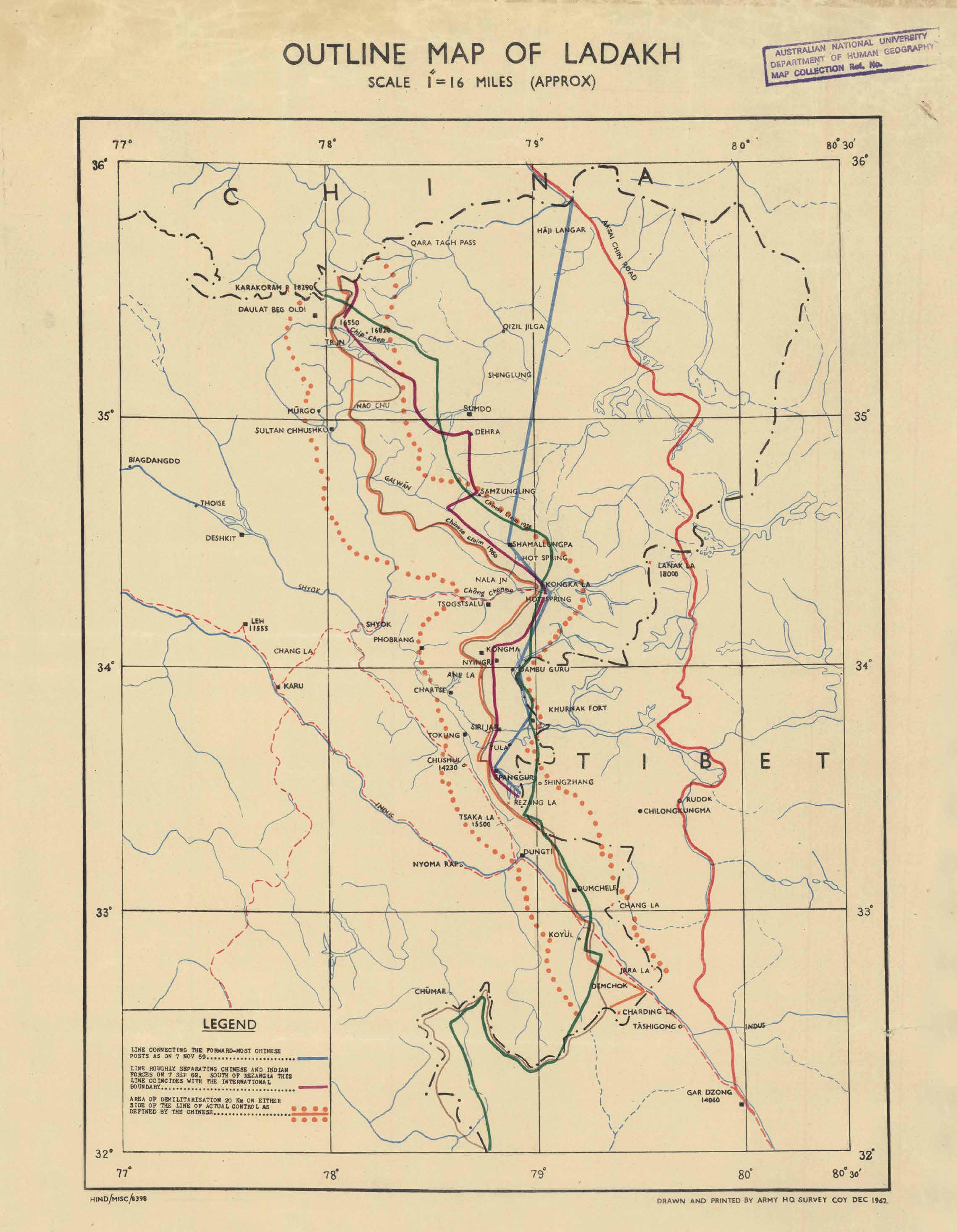OUT OF CONTROL

FOR THE FIRST TIME in forty-five years, on 15 June 2020, India and China recorded the death of Indian soldiers on the Line of Actual Control-the contested border between the two countries, which stretches from the Karakoram Pass in the west to Myanmar in the east. The deaths occurred in the Galwan Valley, in Ladakh, and these were the first military casualties in the territory since the 1962 Sino-India War. The full details of the incident are shrouded in ambiguity, but it involved Chinese soldiers pitching tents around the Galwan Valley and their forceful eviction by the Indian Army-there is little clarity on whether China's People's Liberation Army had agreed to abandon these positions.
This led to a clash which claimed the lives of 20 Indian soldiers and at least four PLA soldiers.
More than seventy Indian soldiers were injured while nearly a hundred more, including some officers, were taken captive by the Chinese. No Chinese soldier was in Indian captivity. "We were taken by surprise by how well prepared they were for the clash," a top officer at the army headquarters in Delhi, who was part of the decision-making in the Ladakh crisis, told me.
The LAC has neither been delineated on the map nor demarcated on the ground by either side.
The last attempt to do so failed nearly two decades ago. The difference in the two sides' understanding of it is so vast that New Delhi claims the border between the two countries is 3,488 kilometres long while China says it is only around two thousand. It is the world's longest disputed border.
Diese Geschichte stammt aus der October 2022-Ausgabe von The Caravan.
Starten Sie Ihre 7-tägige kostenlose Testversion von Magzter GOLD, um auf Tausende kuratierte Premium-Storys sowie über 9.500 Zeitschriften und Zeitungen zuzugreifen.
Bereits Abonnent ? Anmelden
Diese Geschichte stammt aus der October 2022-Ausgabe von The Caravan.
Starten Sie Ihre 7-tägige kostenlose Testversion von Magzter GOLD, um auf Tausende kuratierte Premium-Storys sowie über 9.500 Zeitschriften und Zeitungen zuzugreifen.
Bereits Abonnent? Anmelden

RESISTING PERSECUTION
Muslim prisoners' writings in contemporary India

THE DOMESTIC PROFITS OF WAR
The India-Pakistan conflict is sustaining the political projects of their leaders

THE AFTERMATH
Custodial killings, detentions and demolitions haunt a mourning Kashmir

DY Patil Deemed to be University, Navi Mumbai: A Legacy of Excellence in Education, Healthcare, Technology and Sports
In the heart of Navi Mumbai, DY Patil Deemed to be University stands as a beacon of educational excellence and innovation. Under the dynamic leadership of Chancellor and President Dr. Vijay D. Patil, the university has transformed challenges into opportunities, embodying a deep commitment to shaping a better future through education, healthcare, technology, and sports.

KARNATAKA RESIDENTIAL EDUCATIONAL INSTITUTIONS SOCIETY-KREIS
\"Building Brighter Tomorrows through Quality Education\"

FAULT LINES
The pre-Sanskritic roots of Indian languages

Vermillion Lines
Operation Sindoor and the delusion of deterrence

THE LEDE
Pedalling Promises Delhi's struggles with cycling /Communities

SEPARATED LIVES
Kenya's invisibilised waste pickers

The Nuclear Garden Path
The logic of nuclear deterrence and its false assurances of safety
